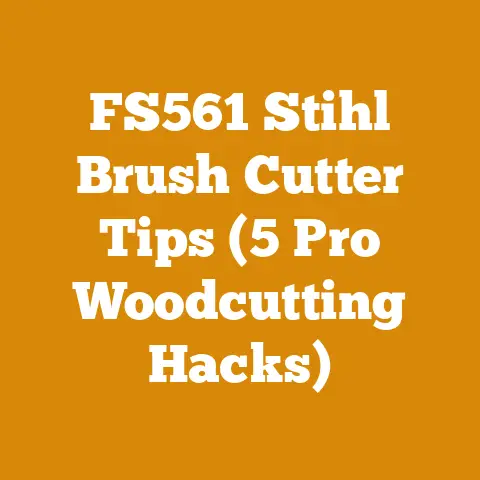Big Leaf Maple Wood Applications (Expert Tips for Woodworkers)
Let’s dive into the world of Big Leaf Maple and unlock its potential for your woodworking projects.
How to Master Big Leaf Maple Woodworking: An Expert’s Guide
Big Leaf Maple (Acer macrophyllum) – it’s a wood that’s captivated me for years.
I remember the first time I saw a truly exceptional piece; the figure was mesmerizing, almost like looking into a flowing river of light.
Since then, I’ve spent countless hours working with it, learning its quirks, and discovering the secrets to bringing out its best qualities.
I’m going to share everything I know, from selecting the right boards to applying the perfect finish.
Whether you’re a seasoned pro or just starting out, this guide will give you the expert tips you need to master Big Leaf Maple woodworking.
Understanding Big Leaf Maple: A Woodworker’s Foundation
Before you even think about firing up your saw, let’s get to know our material.
Big Leaf Maple is a relatively soft hardwood, typically found along the Pacific Coast of North America.
It’s known for its creamy white to light brown color and, most importantly, its figure.
Figure: This is where Big Leaf Maple really shines.
“Figure” refers to the patterns and variations in the wood grain.
Common figures include:- Quilted: Resembles puffy, interconnected pillows.
This is highly prized and often commands a premium price. - Curly/Tiger Stripe: Features tight, parallel waves that create a shimmering effect.
- Burl: Distorted grain patterns that create swirling, eye-catching designs.
Burls are often found at the base of the tree or where branches have been removed. - Birdseye: Small, eye-shaped patterns scattered across the surface.
- Quilted: Resembles puffy, interconnected pillows.
Workability: Because it’s relatively soft (Janka hardness of around 850 lbf), Big Leaf Maple is generally easy to work with using both hand tools and power tools.
It glues well, takes stain evenly (with proper preparation), and can be bent with steam.Sustainability: Big Leaf Maple is generally considered a sustainable wood source.
It grows quickly and abundantly in its native range.
Look for wood that is certified by the Forest Stewardship Council (FSC) to ensure responsible harvesting practices.Cost: The cost of Big Leaf Maple varies widely depending on the figure and grade of the wood.
Plain, unfigured maple is relatively inexpensive, while highly figured pieces can be quite pricey.
Expect to pay a premium for quilted or burl maple.
Selecting the Perfect Big Leaf Maple Boards: A Critical First Step
Choosing the right boards is half the battle.
You wouldn’t build a house on a shaky foundation, and you shouldn’t start a woodworking project with subpar lumber.
Visual Inspection: This is crucial.
Hold the board up to the light and examine it carefully.
Look for:- Defects: Knots, cracks, checks (small splits at the end of the board), and insect damage.
- Figure: Determine if the figure is appealing and suitable for your project.
Remember that figure can change as you work the wood. - Color: Look for consistent color throughout the board.
Discoloration can indicate staining or fungal growth. - Grain Orientation: Pay attention to the grain direction, especially if you’re planning to bend the wood or join multiple pieces together.
- Moisture Content: Use a moisture meter to check the moisture content.
Ideally, it should be between 6-8% for indoor projects.
Wood that is too wet or too dry will be prone to warping and cracking.
Sizing and Dimensions: Consider the dimensions of your project and choose boards that are slightly larger than needed.
This will give you some wiggle room for cutting and shaping.Grading: Lumber is typically graded based on its appearance and the presence of defects.
Common grades include:- FAS (First and Seconds): The highest grade, with minimal defects.
- Select: A slightly lower grade than FAS, but still suitable for many projects.
- Common: Contains more defects and is typically used for utility purposes.
The “Tap Test”: Give the board a gentle tap.
A solid, resonant sound indicates good quality.
A dull or hollow sound may indicate internal defects.My Personal Tip: Don’t be afraid to ask the lumberyard staff for help.
They often have valuable insights and can point you towards the best boards.
I once spent an hour sifting through a stack of maple with a lumberyard employee who knew exactly which boards had the hidden “tiger stripe” figure I was looking for.
Essential Tools for Working with Big Leaf Maple
Having the right tools makes all the difference.
You don’t need to break the bank, but investing in quality tools will save you time, frustration, and potentially, injury.
Cutting Tools:
- Table Saw: Essential for ripping boards to width and cutting accurate angles.
Look for a saw with a sharp blade and a stable fence. - Miter Saw: Used for making precise crosscuts.
A sliding miter saw is particularly useful for cutting wide boards. - Band Saw: Ideal for cutting curves and irregular shapes.
- Hand Saw: A good quality hand saw is essential for making fine cuts and fitting joints.
- Table Saw: Essential for ripping boards to width and cutting accurate angles.
-
Shaping Tools:
- Jointer: Used to create a flat, square edge on a board.
- Planer: Used to flatten and smooth the face of a board and bring it to a consistent thickness.
- Router: A versatile tool for shaping edges, cutting grooves, and creating decorative details.
- Hand Planes: Essential for fine-tuning surfaces and creating smooth, flowing curves.
Sanding Tools:
- Random Orbital Sander: The workhorse of the sanding process.
Use it to remove scratches and smooth surfaces. - Detail Sander: Used for sanding tight corners and intricate details.
- Hand Sanding Block: Essential for final sanding and achieving a perfectly smooth finish.
- Random Orbital Sander: The workhorse of the sanding process.
-
Measuring and Marking Tools:
- Combination Square: Used for marking square lines and measuring depths.
- Marking Gauge: Used for marking parallel lines, such as for mortises and tenons.
- Tape Measure: An essential tool for measuring lengths and widths.
- Pencils: Use a sharp pencil to mark cut lines and layout details.
-
Safety Equipment:
- Safety Glasses: Protect your eyes from flying debris.
- Hearing Protection: Protect your ears from loud noises.
- Dust Mask or Respirator: Protect your lungs from dust.
- Push Sticks and Push Blocks: Keep your hands away from the blade when using power tools.
Unique Tool Insight: I’ve found that a card scraper is invaluable for working with figured maple.
It allows you to remove tear-out and create a glass-smooth surface without sanding.
It takes some practice to master, but the results are worth it.
Mastering Wood Processing Techniques for Big Leaf Maple
Processing Big Leaf Maple requires finesse and attention to detail.
Here’s a breakdown of key techniques:
-
Milling:
- Jointing: Start by jointing one face of the board to create a perfectly flat surface.
- Planing: Then, plane the opposite face parallel to the jointed face.
- Ripping: Use a table saw to rip the board to the desired width.
- Crosscutting: Use a miter saw to cut the board to the desired length.
Drying:
- Air Drying: The most traditional method, but it can take months or even years to dry wood properly.
Stack the wood with stickers (thin strips of wood) between each layer to allow for air circulation. - Kiln Drying: A faster method that uses heat and humidity to dry the wood.
This method is more expensive but reduces the risk of warping and cracking. - My Drying Story: I once tried to speed up the air-drying process by placing a stack of maple boards in my garage with a dehumidifier running.
It worked, but I ended up with a few boards that were case-hardened (the surface dried too quickly, trapping moisture inside).
Lesson learned: patience is key!
- Air Drying: The most traditional method, but it can take months or even years to dry wood properly.
Stabilizing:
- Purpose: Stabilizing wood involves impregnating it with a resin that hardens and strengthens the wood, making it less prone to warping and cracking.
This is particularly useful for highly figured wood. - Process: The wood is placed in a vacuum chamber and the resin is drawn into the wood cells.
The resin is then cured with heat. - Cost-Effectiveness: Stabilizing can be expensive, but it can be worth the investment for valuable pieces of figured maple.
It can also improve the wood’s workability and finishing properties.
- Purpose: Stabilizing wood involves impregnating it with a resin that hardens and strengthens the wood, making it less prone to warping and cracking.
Bending:
- Steam Bending: A traditional method that involves steaming the wood to make it pliable.
The wood is then bent around a form and allowed to dry. - Lamination Bending: A more modern method that involves gluing thin strips of wood together around a form.
This method is stronger and more predictable than steam bending. - Safety Standards: When steam bending, be careful of hot steam and wear gloves to protect your hands.
- Steam Bending: A traditional method that involves steaming the wood to make it pliable.
Mastering Joinery Techniques for Big Leaf Maple
Strong, well-executed joinery is essential for creating durable and beautiful woodworking projects.
- Mortise and Tenon: A classic joint that is strong and reliable.
The mortise is a hole cut into one piece of wood, and the tenon is a projection that fits into the mortise. - Dovetail Joint: A strong and attractive joint that is often used for drawers and boxes.
The dovetails interlock, creating a mechanical bond that resists pulling forces. - Miter Joint: A joint that is formed by joining two pieces of wood at an angle.
Miter joints are often used for picture frames and decorative moldings. - Butt Joint: A simple joint that is formed by joining two pieces of wood end to end.
Butt joints are not very strong and should be reinforced with screws or dowels. - Biscuit Joint: A quick and easy joint that uses oval-shaped biscuits to align and reinforce the joint.
- Pocket Hole Joint: A joint that uses screws inserted at an angle into pre-drilled holes.
Pocket hole joints are strong and easy to assemble. - My Joinery Secret: When working with figured maple, I often reinforce my joints with epoxy resin.
This helps to prevent the wood from splitting or cracking around the joint.
I also use a technique called “drawboring” on my mortise and tenon joints, which involves slightly offsetting the holes for the pegs to create a tighter, stronger joint.
The Art of Finishing Big Leaf Maple: Bringing Out the Beauty
Finishing is the final step in the woodworking process, and it’s crucial for protecting the wood and enhancing its natural beauty.
Sanding:
- Start with a Coarse Grit: Begin with 120-grit sandpaper to remove scratches and imperfections.
- Work Your Way Up to a Fine Grit: Gradually increase the grit to 180, 220, and finally 320-grit sandpaper.
- Sand with the Grain: Always sand in the direction of the grain to avoid creating cross-grain scratches.
- Use a Sanding Block: A sanding block will help to distribute the pressure evenly and prevent you from rounding over edges.
- My Sanding Ritual: I use a technique called “wet sanding” with mineral spirits to create an ultra-smooth surface.
After sanding with each grit, I wipe the surface down with a damp cloth to raise the grain.
Then, I let it dry and sand it again with the same grit.
This process removes any loose fibers and creates a surface that is perfectly smooth and ready for finishing.
Applying Stain (Optional):
- Test the Stain First: Always test the stain on a scrap piece of wood to make sure you like the color.
- Apply the Stain Evenly: Use a brush or a rag to apply the stain evenly to the wood.
- Wipe Off the Excess: After a few minutes, wipe off the excess stain with a clean rag.
- Let the Stain Dry Completely: Allow the stain to dry completely before applying a topcoat.
- Staining Secret: Big Leaf Maple can sometimes be blotchy when stained.
To prevent this, I apply a coat of pre-stain wood conditioner before staining.
This helps to even out the wood’s porosity and create a more consistent color.
Applying a Topcoat:
-
Types of Topcoats: Common topcoats include:
- Polyurethane: A durable and water-resistant finish that is easy to apply.
- Lacquer: A fast-drying finish that provides a hard, glossy surface.
- Varnish: A durable and oil-based finish that provides a warm, amber tone.
- Oil Finish: A natural finish that penetrates the wood and provides a soft, matte sheen.
- Water-Based Finish: An environmentally friendly finish that is low in VOCs.
- Application Techniques: Apply the topcoat according to the manufacturer’s instructions.
Use a brush, a rag, or a sprayer. - Sanding Between Coats: Sand lightly between coats with fine-grit sandpaper to remove any imperfections.
- My Finishing Philosophy: I prefer to use oil-based finishes on Big Leaf Maple because they enhance the wood’s natural warmth and figure.
I often use a combination of boiled linseed oil and beeswax to create a durable and beautiful finish.
For pieces that need extra protection, I’ll use a few coats of polyurethane over the oil finish.
- Application Techniques: Apply the topcoat according to the manufacturer’s instructions.
-
-
Polishing:
- Purpose: Polishing is the final step in the finishing process, and it’s used to create a smooth, glossy surface.
- Techniques: Use a polishing compound and a soft cloth to polish the finish.
- Polishing Tip: I use a carnauba wax polish to give my finished pieces a deep, lustrous shine.
Project Planning: Bringing Your Big Leaf Maple Vision to Life
Before you start cutting wood, it’s essential to have a clear plan.
- Define Your Project: What are you building? A table, a chair, a box?
- Create a Design: Sketch out your design and determine the dimensions of each piece.
- Make a Materials List: List all the materials you’ll need, including lumber, hardware, and finishing supplies.
- Estimate the Cost: Calculate the cost of all the materials and tools.
- Plan Your Workflow: Determine the order in which you’ll perform each step of the project.
- Set a Timeline: Estimate how long it will take to complete the project.
- My Planning Process: I use a combination of hand sketches and computer-aided design (CAD) software to plan my projects.
I also create a detailed cutting list to minimize waste and ensure that I have enough lumber.
I always add a contingency plan for unexpected problems or delays.
Safety First: Protecting Yourself in the Workshop
Woodworking can be dangerous, so it’s essential to take safety precautions.
- Wear Safety Glasses: Protect your eyes from flying debris.
- Wear Hearing Protection: Protect your ears from loud noises.
- Wear a Dust Mask or Respirator: Protect your lungs from dust.
- Use Push Sticks and Push Blocks: Keep your hands away from the blade when using power tools.
- Keep Your Work Area Clean and Organized: A cluttered work area is a safety hazard.
- Never Work When You’re Tired or Distracted: Fatigue and distraction can lead to accidents.
- Know Your Tools: Read the manufacturer’s instructions for all your tools and learn how to use them safely.
- Unplug Tools Before Making Adjustments: Always unplug a tool before changing blades or making other adjustments.
- First Aid Kit: Keep a well-stocked first aid kit in your workshop.
- Safety Course: Consider taking a woodworking safety course to learn about potential hazards and how to avoid them.
- My Safety Rule: I have a strict “no distractions” rule in my workshop.
When I’m using power tools, I turn off my phone and focus solely on the task at hand.
I also make sure to take frequent breaks to avoid fatigue.
Case Studies: Real-World Big Leaf Maple Projects
Let’s look at some real-world examples to see how these techniques are applied in practice.
Project 1: A Quilted Maple Coffee Table
- Equipment Used: Table saw, jointer, planer, random orbital sander, spray gun.
- Wood Type: Highly figured quilted Big Leaf Maple.
- Finishing: Clear lacquer finish to enhance the figure.
- Safety Considerations: Careful handling of the expensive quilted maple to avoid damaging the figure.
Proper ventilation when spraying lacquer.
Project 2: A Curly Maple Rocking Chair
- Equipment Used: Band saw, router, spokeshave, steam bender.
- Wood Type: Curly Big Leaf Maple.
- Joinery: Mortise and tenon joints reinforced with epoxy.
- Safety Considerations: Caution when using the steam bender to avoid burns.
Proper support for the curved pieces during assembly.
Project 3: A Birdseye Maple Jewelry Box
- Equipment Used: Miter saw, table saw, hand planes, detail sander.
- Wood Type: Birdseye Big Leaf Maple.
- Joinery: Dovetail joints.
- Finishing: Oil finish followed by wax polish.
- Safety Considerations: Precise cuts required for the dovetail joints.
Careful sanding to avoid damaging the delicate birdseye figure.
Troubleshooting Common Big Leaf Maple Woodworking Problems
Even with the best planning and preparation, you may encounter problems along the way.
Here are some common issues and how to solve them:
- Tear-Out: Figured maple is prone to tear-out, especially when planing against the grain.
Use a sharp blade, take light cuts, and try planing in the opposite direction.
A card scraper can also be used to remove tear-out. - Blotchy Staining: As mentioned earlier, Big Leaf Maple can be blotchy when stained.
Use a pre-stain wood conditioner to even out the wood’s porosity. - Warping: Big Leaf Maple is susceptible to warping if it’s not properly dried and stored.
Store the wood in a dry, stable environment and avoid exposing it to extreme temperature changes. - Splitting: Figured maple can be prone to splitting, especially around knots and other defects.
Reinforce weak areas with epoxy resin. - Glue Joint Failure: Ensure that the wood surfaces are clean and dry before applying glue.
Use a high-quality wood glue and clamp the joint firmly until the glue is fully cured. - My Troubleshooting Tip: When dealing with tear-out, I often use a technique called “back-planing.” This involves planing the wood in the opposite direction of the grain, which can help to prevent tear-out.
It requires a very sharp blade and a light touch.
The Future of Big Leaf Maple Woodworking
The future of Big Leaf Maple woodworking is bright.
As more woodworkers discover the beauty and versatility of this wood, its popularity will continue to grow.
- Sustainability: Sustainable harvesting practices will become increasingly important to ensure the long-term availability of Big Leaf Maple.
- Innovation: New technologies, such as computer-controlled (CNC) machining and 3D printing, will open up new possibilities for working with Big Leaf Maple.
- Collaboration: Woodworkers will increasingly collaborate with designers and artists to create innovative and beautiful pieces.
- My Prediction: I believe that we will see a resurgence of interest in traditional woodworking techniques, such as hand planing and carving, as woodworkers seek to connect with the wood on a deeper level.
Final Thoughts: Embrace the Journey
Working with Big Leaf Maple is a journey of discovery.
It requires patience, skill, and a deep appreciation for the beauty of the wood.
Don’t be afraid to experiment, make mistakes, and learn from your experiences.
The rewards are well worth the effort.
I hope this guide has given you the knowledge and confidence you need to master Big Leaf Maple woodworking.
Now, go forth and create something beautiful!






